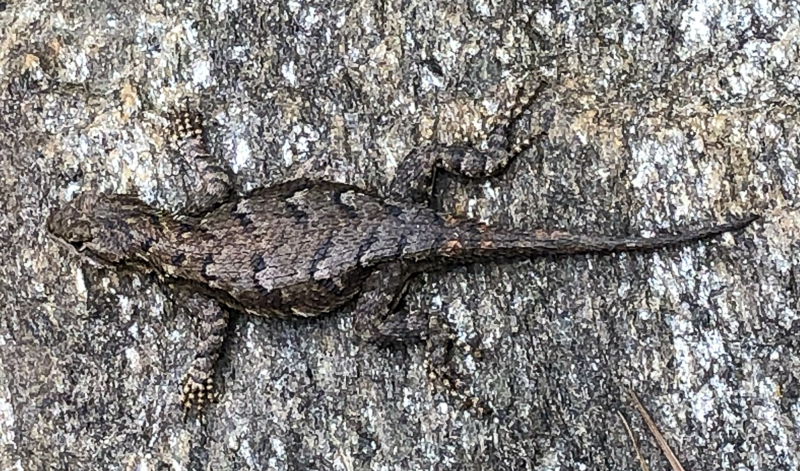Ask a Naturalist: Eastern Fence Lizard
For immediate release ‐ May 26, 2021
Ask a Naturalist
Contact: Jessica Wackes, 919.707.9850. Images available upon request

By Greg Skupien, Naturalist Center Curator
With the return of warm weather, you’re more likely to find lizards and other reptiles basking in the sunlight. Recently, we received a photo from Durham of a common North Carolina native lizard.
The Eastern Fence Lizard, Sceloporus undulatus, can be found in most of our state except the Outer Banks and at very high elevations. This species prefers relatively dry, open woodlands with lots of sunlight. They are active during the day and most commonly seen on logs, wood fences and on the sides of trees. They range from 4.0 to 7.2 inches in total length.
One of their most distinctive features is their body scales, which are rough and pointed. Additionally, females and juveniles are typically patterned with dark wavy lines on their backs. In fact, their species name, undulatus, is Latin for “waved,” and refers to these markings. Males often lack this pattern but make up for it in a bolder, flashier way. During the summer, the adult male is marked with iridescent blue scales on his throat and belly. Males flash their blue scales and perform a series of head bobs and pushups when encountering a rival male or when courting a female.
Eastern Fence Lizards primarily eat spiders and a variety of insects such as beetles. In turn, they are preyed upon by several species of snakes and domestic cats and dogs. When pursued by a predator (or a curious human), these lizards will run to a nearby tree, climb it, and hide on the opposite side of the trunk.
Previous Ask a Naturalist: Ospreys in Action | Older Ask a Naturalist posts
Photo/Submission by Amanda Zickefoose via Ask a Naturalist.
For more information about our upcoming activities, conservation news and ground-breaking research, follow @NaturalSciences on Instagram, Twitter and Facebook. Join the conversation with #visitNCMNS.

